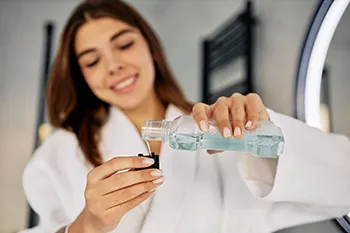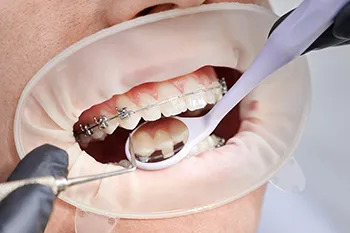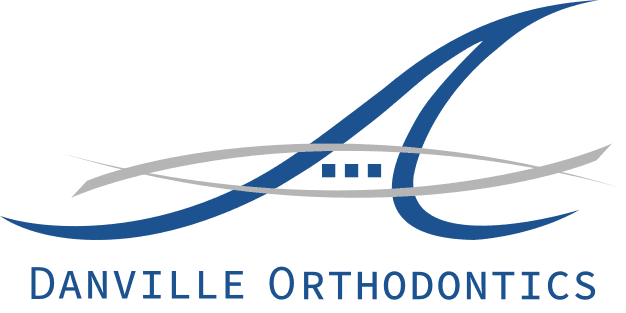Caring for Your Braces or Aligners: Tips for Good Oral Hygiene
This comprehensive guide will equip you with essential tips and techniques to keep your braces or aligners clean and your teeth healthy. Following these recommendations can prevent potential oral health issues and achieve the smile you've always dreamed of.
From brushing techniques to flossing and diet, we'll cover everything you need to know to maintain optimal oral hygiene during your orthodontic journey. We'll also provide specific care tips for both braces and aligners, addressing the unique challenges and considerations associated with each.
Tips for Proper Brushing Techniques
- Please choose the right toothbrush:
Opt for a soft-bristled toothbrush that can gently clean your teeth and gums without irritating them. Electric or sonic toothbrushes can also be effective in reaching difficult-to-access areas.
- Use the correct toothpaste:
Select a fluoride that helps prevent tooth decay and strengthens your enamel. Avoid whitening toothpaste or those containing abrasive ingredients that may damage braces or aligners.
- Brush after every meal:
Brush your teeth thoroughly after every meal and snack to keep your braces or aligners clean and free of food particles and plaque. If brushing isn't possible, rinse your mouth with water to dislodge any debris.
- Take time:
Brush your teeth gently and meticulously, dedicating at least two minutes to each brushing session. Pay extra attention to the areas around brackets, wires, and aligners, as these areas tend to harbor more plaque.
- Clean all surfaces:
Brush each tooth's front, back, and chewing surfaces, including those with brackets or aligner attachments. Ensure that you reach the gum line and clean along the gum margins.
- Interdental cleaning:
Use interdental brushes or floss threaders to clean between your teeth and around your braces or aligners. These tools help remove plaque from areas a toothbrush may not reach effectively.
- Remember your tongue:
Brushing your tongue helps eliminate bacteria and freshens your breath. Gently brush your tongue from back to front to remove any buildup.
- Regular toothbrush replacement:
Replace your toothbrush or head every three to four months or sooner if the bristles become frayed or worn. This ensures optimal cleaning efficiency.
Consistent and thorough brushing is essential for healthy teeth and gums during orthodontic treatment. Make it a habit to brush after every meal, use the proper technique, and keep your braces or aligners clean to achieve the best possible results.
Flossing and Interdental Cleaning
Flossing and interdental cleaning are crucial for removing plaque and food particles from the spaces between your teeth and around your braces or aligners. Follow these tips for effective flossing and interdental cleaning:
- Choose the right tools:
Select floss, interdental brushes, or water flossers designed explicitly for braces or aligners. These tools are designed to navigate around brackets and wires easily.
- Orthodontic floss:
Alternatively, you can use special orthodontic floss with a stiffened end easily threaded under the archwire. Follow the same technique of sliding the floss up and down along the sides of your teeth.
- Interdental brushes:
Interdental brushes are small, cone-shaped brushes that can clean between teeth and around braces or aligners. Insert the brush between teeth and gently move it back and forth to remove plaque and debris. Choose a brush size that fits comfortably between your teeth.
- Water flossers:
Water flossers use water to clean between teeth and around braces or aligners. Fill the reservoir with water, aim the nozzle at the spaces between your teeth, and let the water remove debris and plaque. Adjust the pressure according to your comfort level.
- Floss after meals:
Flossing helps remove any food particles that may have become trapped between your teeth or around your braces or aligners. If you cannot floss, use an interdental brush or water flosser.
- Regular flossing:
Aim to floss or use interdental cleaning tools at least once daily to maintain optimal oral hygiene and prevent plaque buildup.
- Seek guidance:
If you need help with the flossing technique or which interdental cleaning tool to use, consult your orthodontist or dental hygienist. They can provide personalized guidance and recommendations.
Mouthwash and Antiseptic Rinses
Using mouthwash or antiseptic rinses can provide additional protection for your teeth, gums, and orthodontic appliances. Here's how to make the most of mouthwash and antiseptic rinses during your orthodontic treatment:
- Mouthwash and antiseptic rinses can help reduce bacteria, freshen breath, and promote a clean and healthy mouth. They can reach areas that brushing and flossing may miss, including around brackets, wires, and aligners.

- Opt for an alcohol-free or specifically designed for use with braces or aligners. Alcohol-free options are generally gentler and less likely to irritate. Consult your orthodontist or dentist for recommendations.
- Use mouthwash after brushing and flossing to enhance the effectiveness of your oral hygiene routine. It's generally recommended to use mouthwash at a different time than brushing to avoid rinsing away the benefits of toothpaste.
- If you have concerns about using mouthwash or antiseptic rinses with your braces or aligners, don't hesitate to consult your orthodontist. They can guide specific products and offer personalized advice.
By incorporating mouthwash or antiseptic rinses into your oral hygiene routine, you can further enhance the cleanliness of your mouth, reduce bacteria, and maintain fresh breath throughout your orthodontic treatment.
Hygiene Tips for Braces
Caring for braces requires special attention to ensure that your teeth, brackets, and wires remain clean and in good condition. Here are some hygiene tips specifically for braces:
- Cleaning brackets and wires:
Use a soft-bristled toothbrush or an interdental brush to clean around each bracket and wire. Brush gently in a circular motion, focusing on where the bracket meets the tooth. Pay extra attention to removing plaque and food particles that can accumulate in these areas.
- Interdental cleaning:
Use interdental brushes or floss threaders to clean between your teeth and around your braces. These tools help remove plaque and debris from areas a toothbrush may not reach effectively.
- Proxy brushes:
Proxy, orthodontic, or interproximal brushes can help clean under wires and between brackets. Choose the appropriate size and gently insert the brush between the wires and teeth, moving it back and forth to remove plaque.
- Be gentle:
Brush and clean your braces gently to avoid causing damage. Applying excessive pressure can lead to bracket breakage or wire bending. Take your time and use a gentle touch to ensure thorough cleaning.
- Orthodontic wax:
If your braces cause discomfort or irritation to the inside of your mouth, apply orthodontic wax over the brackets or wires to create a barrier between your braces and sensitive areas. This can help alleviate discomfort and prevent sores.
- Avoid certain foods:
Be mindful of your foods to avoid damaging your braces. Avoid sticky, hard, or chewy foods that can get stuck in your braces or cause them to break. Cut hard foods into small, manageable pieces to minimize the risk of damage.
- Use a mouthguard:
If you participate in sports or other physical activities, wear a mouthguard to protect your braces and teeth from injury. Consult your orthodontist for recommendations on the best type of mouthguard.
- Follow your orthodontist's instructions:
Your orthodontist will provide specific instructions on caring for your braces. Follow their guidelines regarding cleaning techniques, oral hygiene products, and any other recommendations they provide.
- Regular dental check-ups:
Maintain regular dental check-ups during your orthodontic treatment. These visits allow your orthodontist to monitor your progress, make any necessary adjustments, and ensure your teeth and gums remain healthy.

- Report issues promptly:
If you experience any issues with your braces, such as loose brackets, broken wires, or discomfort, contact your orthodontist immediately. They can provide guidance and schedule an appointment if needed.
By following these hygiene tips, you can effectively care for your braces, maintain good oral hygiene, and contribute to the success of your orthodontic treatment.
Hygiene Tips for Aligners
Proper hygiene is important when it comes to caring for your aligners. Follow these hygiene tips to keep your aligners clean and maintain good oral health:
- Clean aligners regularly:
Remove your aligners and clean them thoroughly at least twice a day. Gently brush them with a soft-bristled toothbrush and a mild, clear antibacterial soap or non-abrasive toothpaste. Rinse them well to remove any residue before placing them back in your mouth.
- Avoid hot water:
Hot water can deform or warp your aligners. Always use lukewarm or cool water when cleaning them.
- Use aligner cleaning solutions:
Consider using specially formulated aligner cleaning solutions or effervescent tablets designed for aligners.
- Rinse before wearing:
Before putting your aligners back in your mouth, rinse them thoroughly to remove any remaining cleaning solution or residue.
- Brush and floss before wearing:
Maintaining good oral hygiene by brushing your teeth and flossing before inserting your aligners is important. This helps remove any food particles or plaque trapped against your teeth.
- Avoid eating or drinking with aligners:
To prevent staining, damage, or warping of your aligners, remove them before eating or drinking anything other than plain water. This also helps maintain good oral hygiene by preventing food particles from getting trapped between your teeth and aligners.
- Store aligners properly:
When not wearing your aligners, store them in their case to prevent loss or damage. Avoid wrapping them in a tissue or napkin, as they can easily be misplaced or discarded.
- Clean your mouth before reinserting:
Before placing your aligners back in your mouth, brush and rinse your teeth thoroughly to remove debris or plaque. This ensures that you insert your aligners into a clean environment.
- Keep aligners away from pets:
Aligners can be attractive to pets due to their scent or texture. Keep them out of reach to prevent accidental damage or loss.
- Attend regular check-ups:
Regularly visit your orthodontist to monitor your progress and address any concerns or issues you may have with your aligners. They can provide professional guidance and ensure your treatment is progressing as planned.
Regular Dental Check-ups
It is important to have regular dental check-ups to maintain good oral health, especially when undergoing orthodontic treatment. Your orthodontist will collaborate with your dentist to ensure that your teeth and gums remain healthy and that your orthodontic treatment progresses as planned. Regular dental check-ups allow them to monitor the movement of your teeth, make necessary adjustments to your braces or aligners, and assess the overall success of your treatment.
Moreover, regular dental check-ups throughout your orthodontic treatment are essential for monitoring your oral health, receiving professional care, and addressing concerns. These appointments ensure that your teeth, gums, and oral health remain in excellent condition.
Contact your Danville dentist, Dr. Hoss Abar, DDS, MSD, at Danville Orthodontics today to learn about The Caring for Your Braces or Aligners.
Resource:
Life with Braces: A Guide to Eating, Speaking, and Daily Care for Adults
*This media/content or any other on this website does not prescribe, recommend, or prevent any treatment or procedure. Therefore, we highly recommend that you get the advice of a qualified dentist or other medical practitioners regarding your specific dental condition.*
